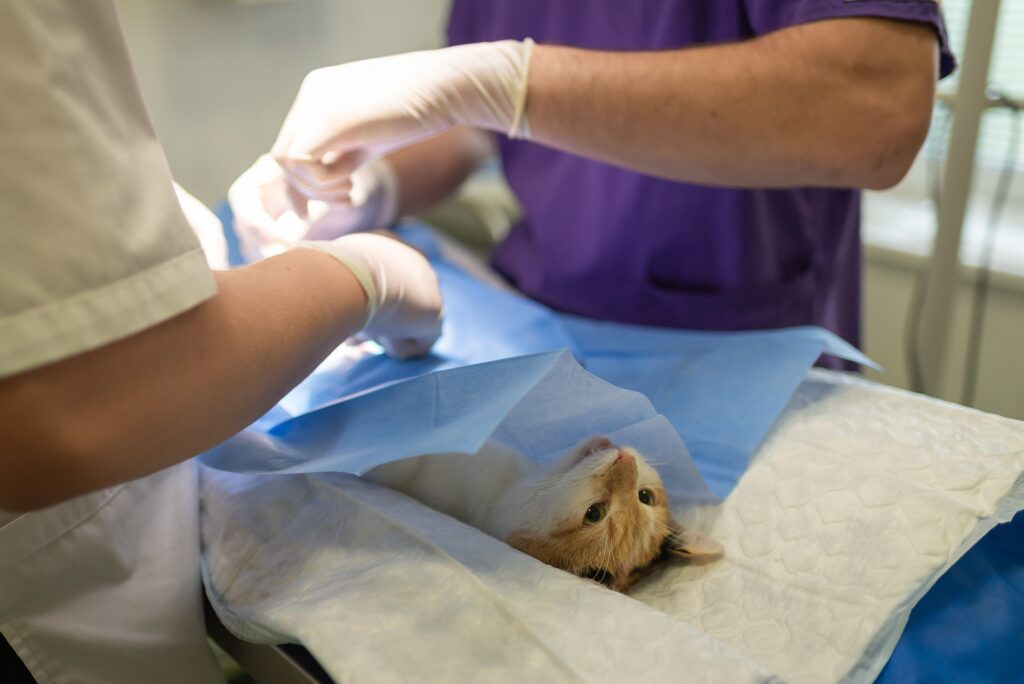Do you want to be a vet assistant? A vet assistant plays a vital role in any veterinary practice, providing support to the veterinary team and helping to ensure the smooth running of the business. If you’re passionate about animals and have good organizational skills, this could be the perfect career for you. Let’s learn how to become a vet assistant.
What Does A Vet Assistant Do?
Before jumping on how to become a vet assistant, let us first understand what a vet assistant does. A vet assistant usually has a variety of duties, including providing supportive care to animals, assisting the veterinarian with exams and treatments, and restraining animals during procedures. Furthermore, they must prepare laboratory samples for testing, take x-rays and other diagnostic tests, administer medications and injections, update patient records and medical charts, offer support on client education programs, and maintain equipment and supplies inventory.
In some veterinary clinics or practices, you may have additional responsibilities like cleaning kennels and cages or helping out with administrative tasks such as scheduling appointments or managing bills.
Read more: How To Become A Real Estate Virtual Assistant?
How To Become A Vet Assistant?

If you love animals and are looking for a career in the Veterinary field, becoming a Vet Assistant might be the perfect solution! Here are 10 steps on how to become a vet assistant.
1. Do Some Research
The first step is to learn as much as you can about what Vet Assistants do on a day-to-day basis. What responsibilities will you have? What type of environment will you be working in? The more you know, the better prepared you’ll be to make the transition into your new career.
2. Get A High School Diploma Or Equivalent
In order to become a vet assistant you will need to have basic educational qualifications related to animal care. This could mean anything from completing a certificate program in veterinary assistance through an accredited college or university to completing a veterinary assistant apprenticeship program. Most employers will require that you have at least a high school diploma or equivalent, so this is an important step. If you don’t have a diploma yet, there are plenty of online or night classes that can help you get one quickly and easily.
3. Consider Taking Some Courses
While it’s not required, taking some college courses related to animal care or biology can give you a leg up on the competition when it comes time to apply for jobs. Many community colleges offer these types of courses, and they’re usually very affordable. Some of the Vet Assistant courses include animal anatomy and physiology, veterinary office management, pharmacology, nutrition, and disease prevention. Veterinary assistant certification is also available in some states.
Read more: The Best SEO Courses On Udemy
4. Find An Internship Or Shadowing Opportunity
If possible, try to find an internship or shadowing opportunity with a local veterinarian. This will give you first-hand experience of what the job is really like and whether or not it’s something you think you would enjoy doing long-term. To become a veterinary assistant you can also look for externship programs in your local area. Pet owners are often looking for someone to help out with their pets, and you could gain valuable experience in the process.
5. Volunteer At An Animal Shelter

Another great way to gain experience is to volunteer at your local animal shelter. Not only will this look great on your resume, but it will also give you a chance to work with animals and see if this is truly the career for you. On-the-job training as a veterinary assistant is also available at some animal shelters.
6. Apply For Vet Assistant Positions
Once you’ve done your research and gained some experience, it’s time to start applying for Vet Assistant positions. Make sure your resume is up-to-date and tailored specifically for veterinary technology roles, and be prepared to ace any interviews that come your way.
7. Stay Up-to-Date On Advances In Veterinary Medicine
The field of veterinary medicine is constantly evolving, and as a result, vet assistants must continually update their skills and knowledge base. Luckily, there are many ways to stay abreast of new developments in the field. You can subscribe to professional journals such as Veterinary Technician Review or listen to podcasts such as The VMA Practice Management Minute. You can also attend continuing education courses offered by local colleges or universities or participate in online seminars offered by organizations.
8. Get Involved In Community Outreach Programs
Many veterinarians participate in community veterinary assistant programs, such as visiting schools to talk about careers in veterinary medicine or providing free vaccinations at local clinics. Getting involved in these types of activities can help you make connections and learn more about the profession while giving back to your community.
9. Start Working As A Vet Assistant!
Once you’ve landed the job, it’s time to get to work! As an approved veterinary assistant, your job will include everything from organizing patient records and assisting in medical procedures, to helping with administrative tasks and cleaning animal cages. It can be hectic at times but it’s also rewarding to work that makes a difference in the lives of animals.
Learn More: Advantages And Disadvantages Of Online Courses
Salary And Career Paths For Vet Assistants
The salary range for Vet Assistants will vary depending on experience and location, but most entry-level positions start at $15 to $20 per hour. With experience, you can expect your pay to increase accordingly. Additionally, many employers offer benefits such as health insurance and vacation time.
Learn More: How Long Does It Take To Learn InDesign?
Here are some perks to consider:

Flexible Hours
One of the best things about being a veterinary assistant is that the hours are flexible. Many veterinary clinics are open late and on weekends to accommodate pet owners’ schedules, which means that veterinary assistants often have the same flexibility. Whether you’re a night owl or an early bird, there’s bound to be a clinic that has hours that work for you.
The Opportunity To Work With Animals
Another great perk of being a veterinary assistant is that you get to work with animals! If you’ve ever wanted a job where you can spend all day surrounded by furry (or not-so-furry) friends, then this is the perfect career for you. As a veterinary assistant, you’ll get to help staff take care of patients, feed and bathe them, and provide them with essential care.
Competitive Pay
In addition to flexible hours and the opportunity to work with animals, another great perk of being a veterinary assistant is that the pay is competitive. According to Indeed, the average salary for a veterinary assistant in the United States is $15.72 per hour. With experience and education, you can expect to earn even more!
Learn More: How To Become An Administrative Assistant
Wrap Up
Hopefully, this post has covered sufficient information on how to become a vet assistant. To conclude, remember to stay up-to-date on advances in veterinary medicine, get involved in community outreach programs, and start working as a vet assistant. Also, don’t forget that being a Vet Assistant has its own perks such as flexible hours, the opportunity to work with animals, and competitive pay. Good luck!
